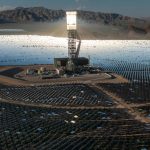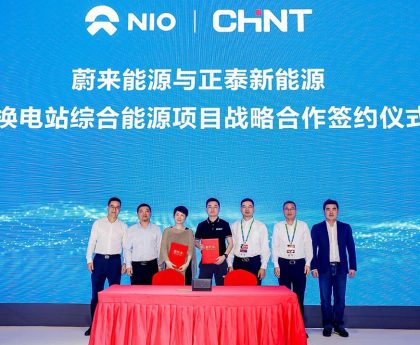BRAINERD — Solar energy is a possibility for Brainerd’s Rotary Park.
A project in the works for about two years, the solar panels are a vision of Rotary Club members, who say one of the last obstacles is a monetary contribution from the city.
Peter Nelson, past president of the Brainerd Noon Rotary Club and co-chair of Rotary Park along with John Forrest, addressed the Parks Board and Brainerd Public Utilities Commission during a joint meeting June 3 to discuss the project.
“We think that it fits incredibly well with the emphasis of environmental responsibility,” Nelson said, noting one of Rotary’s focal points. “It also is a very good educational opportunity to demonstrate our commitment to the environment.”
The project, he added, could serve as a model for other Rotary Clubs in the district to follow.
ADVERTISEMENT
Work started back in 2022, when Rotarians presented to the BPU Commission and stated the newly constructed pavilion at Rotary Park would be a great solar collector with panels on the roof. The commission agreed at that time to recommend the council move forward with the project.
When the Inflation Reduction Act came into play later in 2022, the landscape of the project changed, Nelson said, as cities and nonprofits were now able to earn solar rebates.
The Rotary Club has set aside $5,000 for the project and earned a $5,000 matching grant from its rotary district. The total cost of the project is estimated at $38,120 with all the installation costs, and that’s where the city would come in.
“I don’t think anybody questions whether this is a worthwhile project, whether it’s educational, whether it’s environmentally friendly. All these aspects really fit very nicely with the vision statement of Rotary Park,” Nelson said. “But it’s not really within the finance capabilities of our Rotary Club to finance this in its entirety.”
The request, then, is for the city to cover the remaining estimated $28,120, with the expectation of $11,436 in solar rebates that would go back to the city, making the net investment $16,684. After a certain amount of years, the project would be paid for through the energy garnered and would become a positive revenue generator for the city, Nelson said, estimating about $45,000 in revenue over the 30-year warranty span of the panels.
Interim BPU Director Patrick Wussow, who was on the BPU Commission during the 2022 presentation, said this monetary ask of the city was not included back then, which Nelson said was because of the Inflation Reduction Act.
Since that time, Wussow noted the city installed two solar fields, generating close to 7 megawatts of energy.
“Do we want to spend more money on a project like this when we haven’t even identified how many kilowatts it’s going to bring in?” Wussow asked. “And so that’s a concern.”David Winkleman, a Rotary Club member on the club’s environmental committee, said the estimated power generation is about 9.36 kilowatts, which is enough to power an average home and amounts to about 11,000-12,000 kilowatt hours a year.
ADVERTISEMENT
BPU Commission Chair Dolly Matten said one of her concerns was the location of the project near the river, which is a spot in the city that has seen an uptick in vandalism lately. She said she was nervous about having something of this cost out in the open. Winkleman said everything would be up on the roof of the pavilion and out of harm’s way. If the panels were to be damaged by something like hail, they would be covered by insurance.
Part of the project, Forrest added, would be to run electricity to the pavilion as well and install a security system at the park, with cameras connected to the Law Enforcement Center for real-time monitoring of the park.
Parks Board member Paul Sandy asked what would happen to the panels after 30 years and how much they would cost to replace.
While the panels are under warranty for 30 years, Winkleman said their lifespan will likely be much longer, and they are still projected to produce energy at 80% capacity by the end of the 30 years.
“This is a gift horse for you,” Winkleman told city officials.
BPU Commission member Tad Johnson was enthusiastic about the project.
“Congratulations on navigating so far the tangled web of Brainerd bureaucracy. You got all the right people in the same room, so we’re getting somewhere with that,” Johnson said. “… I’m 100% on board with the BPU Commission funding the gap and owning this thing, and I’ll be a champion to make sure we can do what needs to be done to make sure this project comes to fruition.”
ADVERTISEMENT
Johnson said he could see the Rotarians had done a ton of legwork on the project and would like to see them continuing to work with city staff to determine the feasibility of the project and find out what hurdles remain. He said costs for staff time and the power pedestal that would need to be installed could likely increase the amount of federal rebates the city receives, offsetting even more costs of the project.
“I want this to happen,” Johnson said. “So whatever staff needs to do to get this ball rolling so that we can vote on a final version of owning this and getting construction started at our next meeting on June 25, please, please proceed without expedience.”
Trent Hawkins, electric supervisor with BPU, said there would likely be a cost of about $12,000 to run electricity out to the pavilion as well. Johnson said he’d like to see a proposal with all the elements of the project put together so the BPU Commission can vote on it.
Parks Board President Johnathan Miller said the board is very interested in the project but does not want to be the ones to spend money on it.
“If you guys are picking it up, let’s put some on the roof,” he said to BPU commissioners. “I don’t have any problem with that.”
THERESA BOURKE may be reached at
or 218-855-5860. Follow her on Twitter at
www.twitter.com/DispatchTheresa
.
This post was originally published on 3rd party site mentioned in the title of this site





